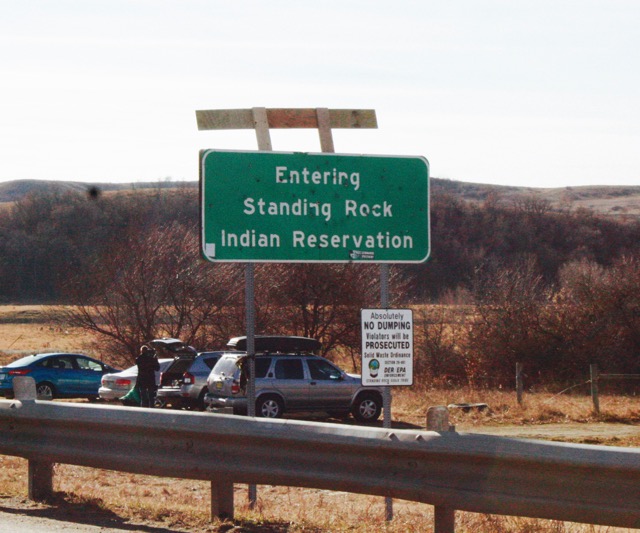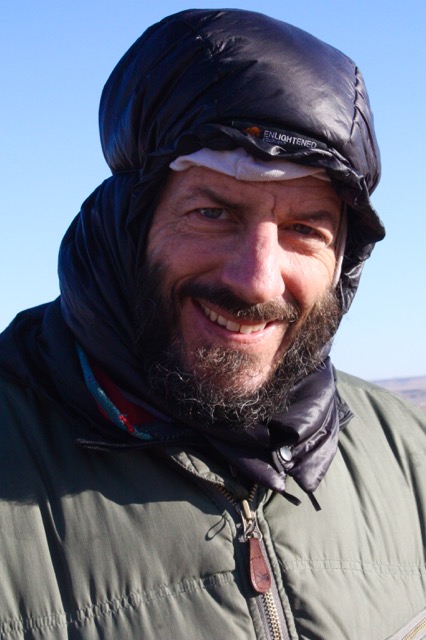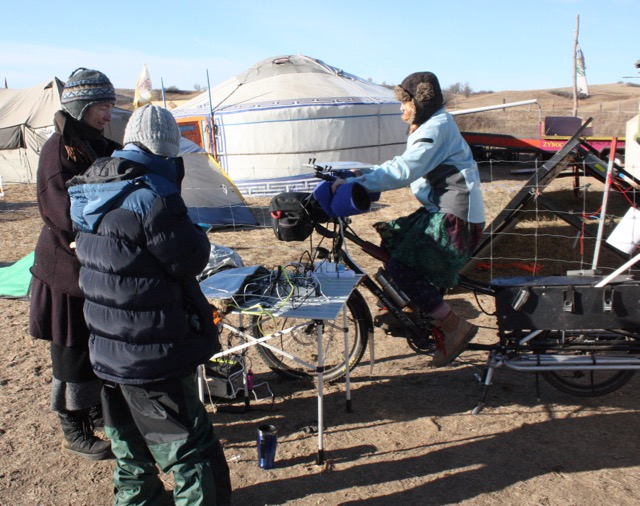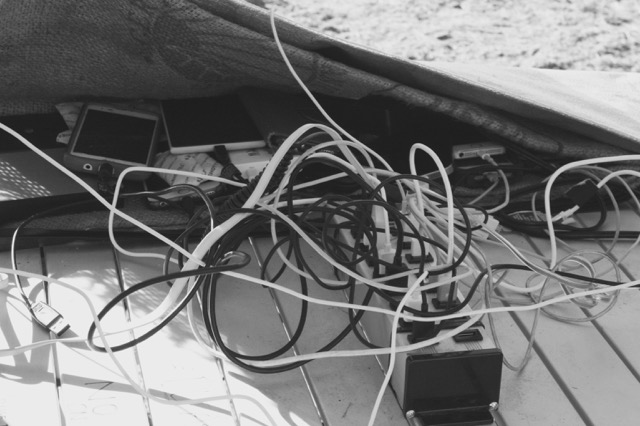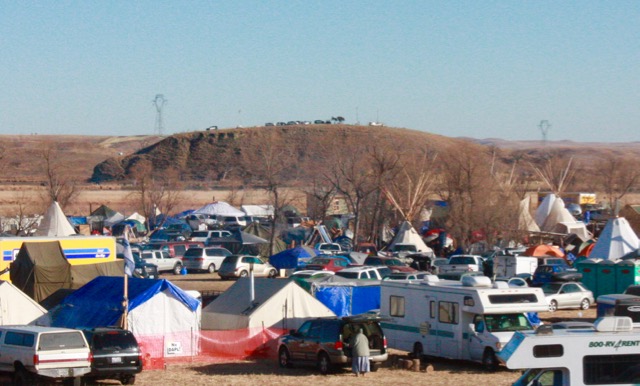OPINION: Standing Rock Standoff… A Personal Perspective, Part Two
The below-freezing morning of November 26 was slowly warming into what would be a balmy afternoon in the low fifties, at the Oceti Sakowin Camp just outside the Standing Rock Sioux reservation boundary.
Meet Mike Cobb, from Portland, Oregon.
Mike Cobb bicycled from Bismark N.D. to Cannon Ball N.D., where the Oceti Sakowin Camp is located, a few days prior to our interview. “It was supposed to be a 44 mile ride to Standing Rock, but the bridge at Fort Rice was closed and guarded, and it created an additional 50 mile detour for me and my buddy.”
“The reason for the bridge closure was that the bridge may not be structurally sound after a fire and burning vehicle, the result of an earlier ‘protection action.’ I’m not an engineer, but it’s hard to believe that the reinforced steel concrete changed much from that incident.”
In other words, it’s a ploy to restrict movement of the water protectors, and the bridge will remain closed until the water protectors move out.
“The detour changed a 44 mile bike ride to a 94 mile ride, including gravel roads, and it took a lot of resolve to get here. But I couldn’t stand being away. So here I am.”
Mike’s camp home was the yellow bivouac a few feet from where we were standing on Media Hill, and next to a stationary bike, whirring away, compliments of a young peddler.
“I brought the Rock the Bike pedal generator here so that we can make sure that all recording devices stay charged and vital so that we can get the true story out, to combat any inaccurate media narratives, which there are plenty of, as you know.” I nodded my head in agreement.
“In the age of cell phones, witnesses are really powerful, right? So I wanted to empower witnesses. That’s what I’m doing here. So far we can charge 22 cellphones simultaneously, but I’d like to get to 25. And then we also have a huge battery that we can charge if the peddler is feeling particularly strong.
“You can hear the whir in the background of the proper cadence of the pedal generator. This young woman, who’s probably 5’ 2” is making 18 phones come back to life.
“One of the important dynamics of this water protection action is that it’s hard to connect to major media while we’re here. We haven’t established solid Wifi, and the cell phone signal is best here (Media Hill) and it’s only 25% of average full connectivity. For $15,000 or so, we could have a solid internet connection.
Mike was interrupted by the woman on the bike. “Hey, anybody want to generate?”
He announced, “We need a peddler. Who wants to get warm? We need to charge 18 phones so people can record.” A young man stepped up to do the job.
“This camp is federal land, but it’s also treaty land. The camps across the river are on reservation land. In terms of our action, it’s technically federal land, so Oceti Sakowin is technically raidable. There’s been two official raid scares. It’s been expensive to our processes and our spirit. I actually packed up the other day because I was afraid for my equipment. I took it to the front lines so people could charge their phones on the go.”
And now there’s the official eviction notice from the Army Corps of Engineers, effective December 5.
“We are waiting for tribal elders to process this and give us direction. Tribal elders discuss this among themselves and move slowly and deliberately and peacefully and prayerfully. We wait for their cue.
“Then there are young people that are coming up with actions that are not presented to or endorsed by the tribal elders, and that’s fair. Everyone has their perspective of what needs to be done, but it does create a little tension.”
“So”, I asked, “what you are saying, in nice terms, is that they’re not being as peaceful as the elders would like…”
Mike responded. “That’s been an outcome. And that’s what gets out in the media, and that is why I wanted to come here. Peace and prayer will win this thing, I’m convinced. I’m convinced of the wisdom of the elders.”
He continued. “I’ll tell you what. Six people can change what the media presents. I’ve seen six people do it. Six hundred people are peaceful and prayerful, and six people define an event. That’s hard because there’s so much positivity and productivity and righteousness going into this. I want to hold space for angry young people. I’m angry, but sympathy and patience are paramount, and respect of the elders.
“I’ve never been around a more positive and respectful and loving community in my life. We’ve set up amazing leadership structure and infrastructure. This camp is an overwhelming success – intelligent and well-designed, with applied ingenuity and resolve to get infrastructure made where months ago there was none. We have schools, we have electricity, we have internal communication, water and food. It’s easy to get fed.”
Mike Cobb, a saged soul, took more time to explain to me what was happening on Turtle Island – the desecration of sacred burial sights, the pepper gas and water cannons launched on the unarmed water protectors, the razor wire, and the use of large lights at night to disturb the night sky of the nearby camps. Turtle Island is occupied by municipal and Morton County police, with back-up from other localities.
The latest human violation rights took place the previous Sunday, November 20.
After leaving Media Hill, I saw two men with radios, dressed in black. I asked if I could take their picture. They consented, and allowed me to record our conversation as well. I had no idea of the stature of the two men I was talking with until I got back to my room and did the research.
Read Part Three tomorrow…
